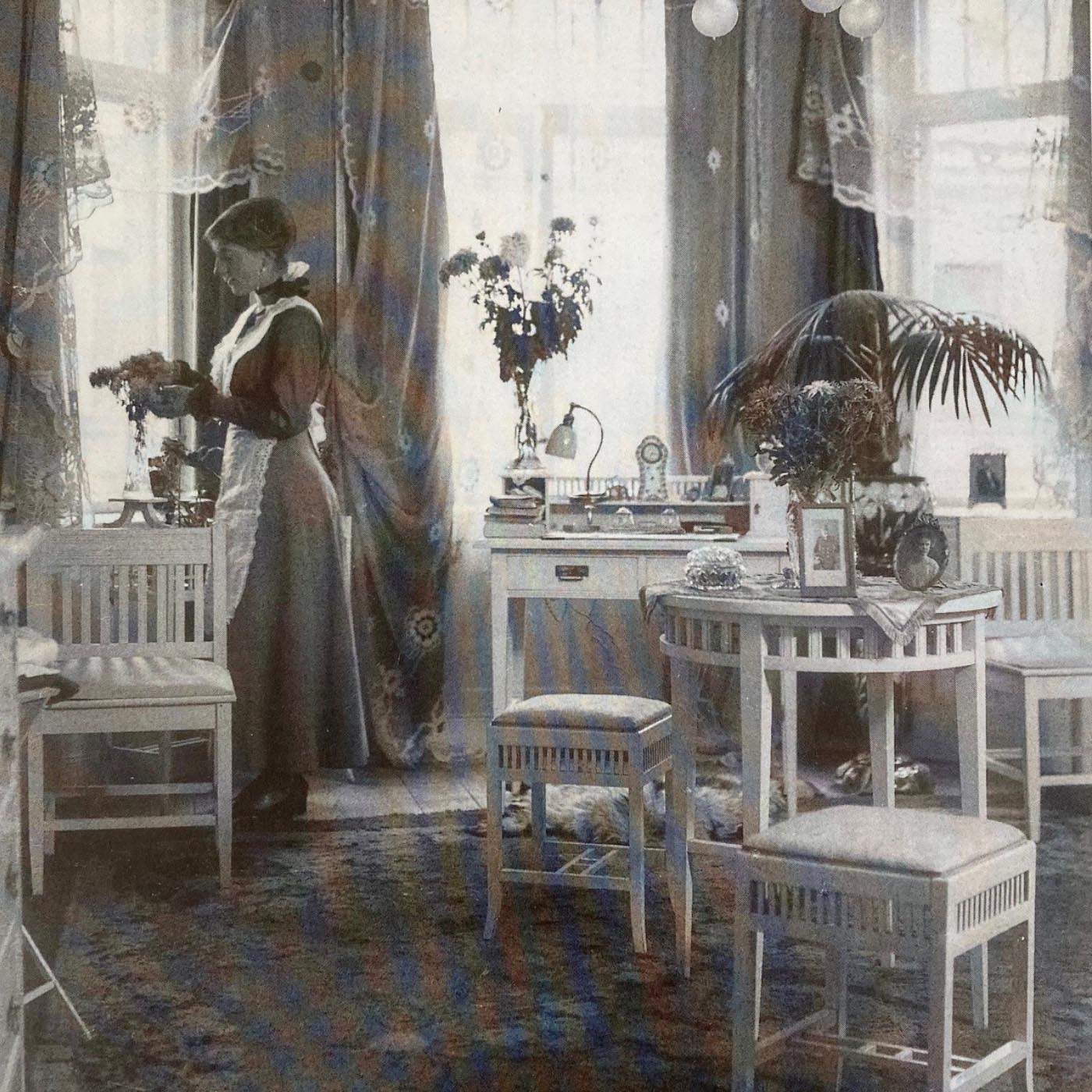
ART NOUVEAU 1880–1920
Art Nouveau, or Jugendstil as it was called in Scandinavia and Germany, emerged at the end of the 19th century. The term "Jugendstil" originated from the Munich magazine Die Jugend (The Youth), which championed this new artistic style. Across most of Europe, it was referred to as Art Nouveau—the new art.
This style was a reaction against the historical imitation of earlier styles in the 19th century, which featured heavy upholstered furniture, dark textiles, and boldly contrasting medallion wallpapers. It also sought to counteract the mass production of cheap, decorative trinkets that had become popular with industrialization.
Inspired by the Arts and Crafts movement in England, Jugendstil rejected the mechanization of craftsmanship. At the same time, it embraced modern innovation, promoting collaboration between artists and manufacturers to create unified, well-thought-out environments with quality, functional goods for everyone. This message resonated with many artists of the time.
Ellen Key, a Swedish author, pedagogue, and social reformer, famously wrote in Idun's Christmas issue of 1897:
"Beauty is not a luxury in life. One works better, feels better, and becomes kinder and happier if one is surrounded at home by beautiful shapes and colors in the objects one uses."
A Holistic Artistic Vision
The holistic approach of Jugendstil meant that the same artists worked across all branches of the arts and crafts. They became true polymaths, designing everything from architecture to furniture, art, tableware, and vases.
Swedish porcelain manufacturers Rörstrand and Gustavsberg employed painters such as Alf Wallander and Gunnar G:son Wennerberg, who designed tableware with softly sculpted forms and motifs drawn directly from Swedish flora.
Ellen Key’s Influence
Ellen Key played a pivotal role in shaping the direction Jugendstil took in Sweden. She advocated for individual freedom alongside social responsibility, emphasizing support for those less fortunate. As a groundbreaking pedagogue, she championed children’s rights and the importance of nurturing their potential.
Her work for peace emphasized respect and understanding between nations, and her advocacy for the underprivileged was particularly evident in her dedication to the working-class women of Stockholm.
Key’s influence extended to furniture design, particularly through her collaboration with architect Carl Westman (1866–1936). Together, they created the Karmstolen (Armchair), a piece designed as part of a larger furniture set for an exhibition in 1899 at the Workers' Institute in Stockholm. The exhibition, initiated by Key, aimed to demonstrate how a working-class home could be furnished beautifully yet simply.
However, the so-called "worker’s furniture" proved too expensive to produce and was ultimately sold to affluent intellectuals instead. The exhibition pieces were green-stained, but they were later produced in red-stained versions, both with and without upholstery.
Key’s Vision of the Good Home
Ellen Key also articulated her vision of the ideal home in her book Beauty for All (1899) and realized it in her own residence, Strand. She is best remembered as an aesthete, emphasizing the importance of beauty in everyday life as a means of enhancing both personal well-being and social harmony.
